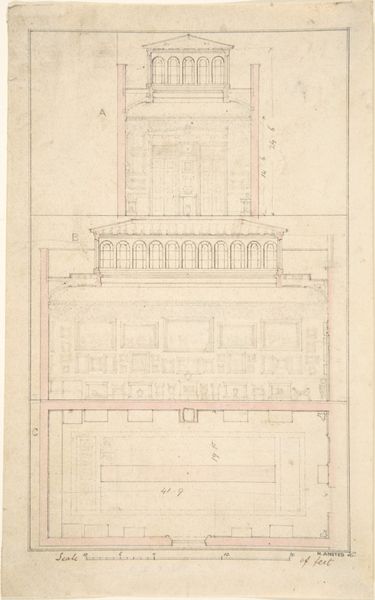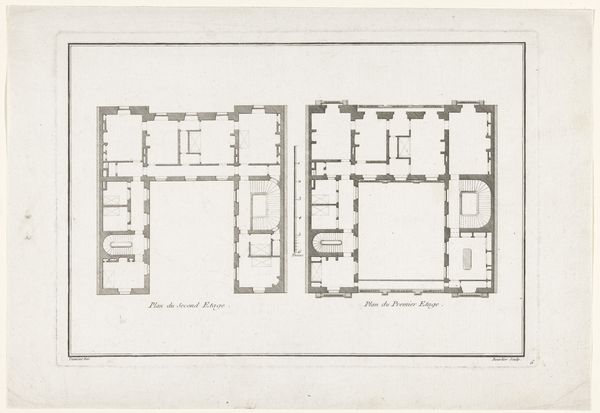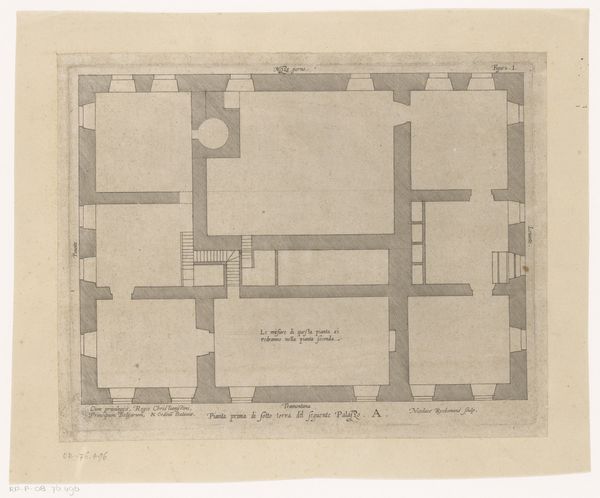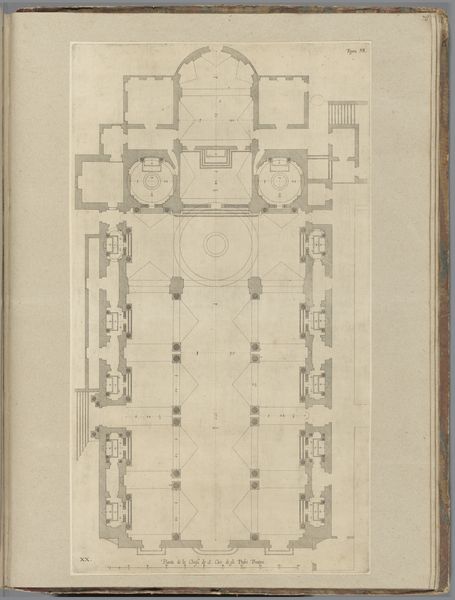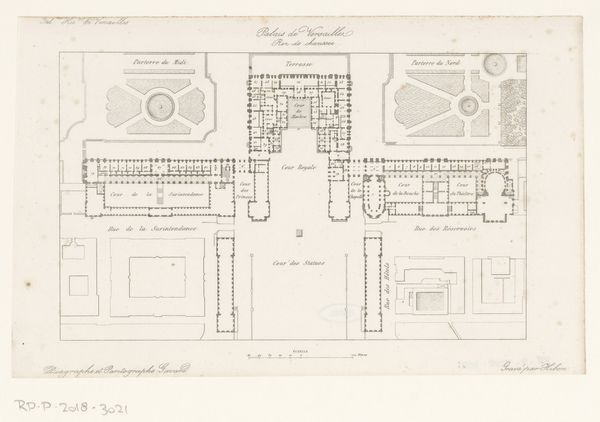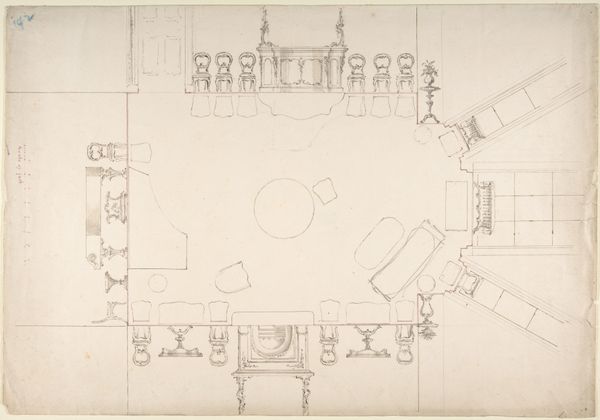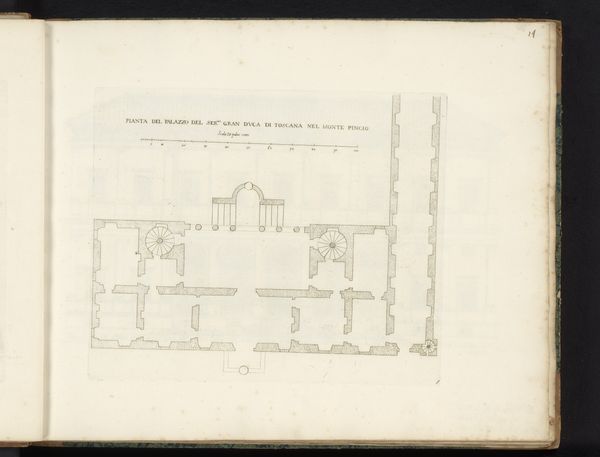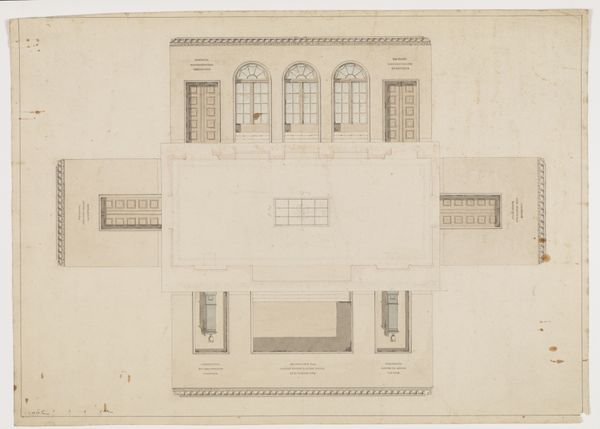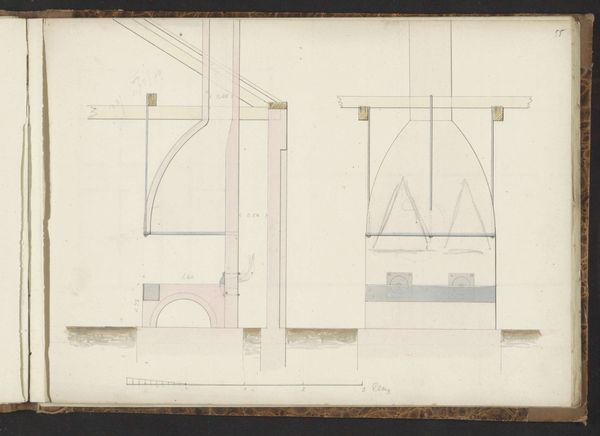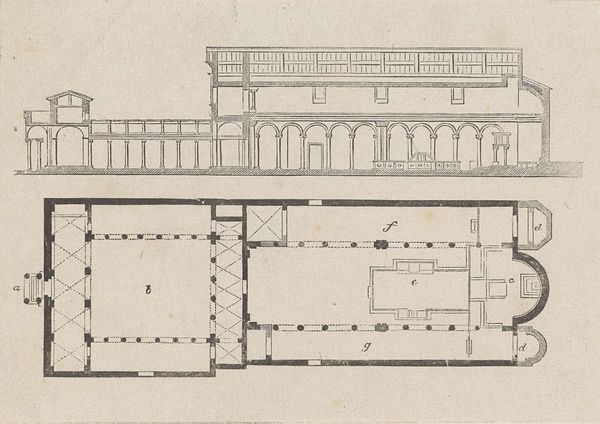
drawing, watercolor, ink, architecture
#
drawing
#
neoclacissism
#
etching
#
watercolor
#
ink
#
geometric
#
architecture drawing
#
cityscape
#
architecture
Dimensions: height 348 mm, width 485 mm
Copyright: Rijks Museum: Open Domain
Editor: We’re looking at "Architectuurstudie van de wanden van een kamer" by Jan Brandes, created sometime between 1770 and 1808. It’s an architectural study rendered in ink, watercolor, and etching. I find the rigid geometry and muted palette unexpectedly soothing. What do you see in this piece? Curator: Beyond the geometry, which is indeed a prominent feature of Neoclassical art, I see a representation of power dynamics and social control embedded within the domestic sphere. Notice how the architectural precision and symmetry promote order and rationality, reflecting the values of the Enlightenment but also its constraints. Who might have lived within such precisely planned walls, and who was excluded? Editor: That’s fascinating. I hadn’t considered the element of control. So, you’re saying that Neoclassicism, despite its seeming harmony, reinforces social hierarchies? Curator: Exactly. Consider the implied opulence and access necessary to commission such detailed architectural designs. It inherently speaks to privilege. How does the architectural space dictate the movements and behaviours of those inhabiting it, and further, who gets to even access the room at all? What gendered assumptions may have been in play during the period that would impact space use? Editor: That shifts my understanding quite a bit. The symmetry now seems less soothing and more…imposing. I see how thinking about the context—who designs, who inhabits—completely changes the artwork’s meaning. Curator: Precisely. Art doesn’t exist in a vacuum. By examining the socio-political context we begin to unearth the subtle yet potent messages embedded in seemingly simple compositions. Editor: I never thought I'd find such depth in an architectural drawing! This has really opened my eyes. Curator: And hopefully opened up your ears as well.
Comments
No comments
Be the first to comment and join the conversation on the ultimate creative platform.


